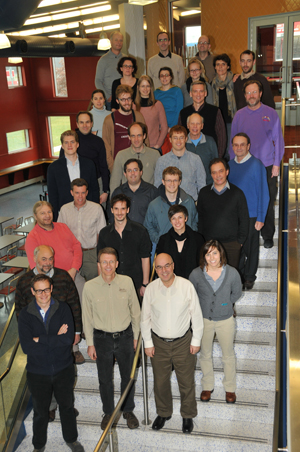
NASA’s ChemCam Team Meets at DSU to Discuss Mars Findings
|
|
Over the last 17 months, the Curiosity Rover has been on Mars sending back data from its exploration of the Red Planet.
Recently members of the ChemCam Team of the Mars Science Laboratory Team met at Delaware State University to discuss the latest findings from that exploration.
Dr. Noureddine Melikechi, who is a member of the Curiosity ChemCam Team, hosted a week of meetings Dec. 15-20 of about 32 ChemCam scientists – which is the group NASA has established to oversee the laser and remote micro-imager on the Curiosity.
Dr. Melikechi is the dean of DSU’s College of Mathematics, Natural Sciences & Technology, the University’s vice president for research, innovation and economic development, professor of physics and the founder of DSU Optics Program.
Curiosity landed on Mars in August 2012 and has been sending data back ever since.
“The purpose of the meeting is to discuss the data that the ChemCam collects on a daily basis,” Dr. Melikechi said. “We are also planning for the measurements that will be taken in the future on Mars.”
Also participating on the ChemCam team and in the meetings is Alissa Mezzacappa, a DSU graduate student.
ChemCam is the laser-based technology on the Curiosity Rover. The ChemCam shoots an infrared laser – more than a million watts of power – at rock surfaces on the planet. The resulting light is read by the unit’s spectrometer, data that is sent back to the scientists on earth.
The ChemCam utilizes a technology called laser-induced spectroscopy, which has been used to determine the composition of objects in extreme environments such as nuclear reactors and on the sea floor. However, this is the first time the technology has been used in space exploration.
The mission has already provided the scientists with a wealth of new information about Mars. In the September issue of the journal Science, an article entitled “Soil Diversity and Hydration as Observed by ChemCam at Gale Crater, Mars” revealed that significant traces of water have been found in the Martian soil. Dr. Melikechi was a co-author of the article.


 This group of scientists are part of NASA's ChemCam Team, which met at DSU on the week of Dec. 16 to discuss the latest findings from the Mars Curiosity mission.
This group of scientists are part of NASA's ChemCam Team, which met at DSU on the week of Dec. 16 to discuss the latest findings from the Mars Curiosity mission.